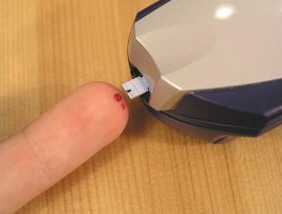 Diabetes is a complex metabolic condition that results in the individual experiencing high blood glucose levels when left untreated. Unfortunately, in the past years the symptoms of diabetes were often overlooked because they seemed rather harmless. However, in the past years with increased media attention, more people understand the effects that diabetes can have on the body and the symptoms that they should look for.
Diabetes is a complex metabolic condition that results in the individual experiencing high blood glucose levels when left untreated. Unfortunately, in the past years the symptoms of diabetes were often overlooked because they seemed rather harmless. However, in the past years with increased media attention, more people understand the effects that diabetes can have on the body and the symptoms that they should look for.
Diabetes can actually take two different forms, should be treated two different ways and can have two different outcomes. Type 1 diabetes develops when an autoimmune response damages the ability of the pancreas to produce any insulin. This particular type of diabetes used to be called juvenile diabetes or insulin-dependent diabetes because the majority of individuals who developed it were less than 20 years of age. Type 2 Diabetes develops when the person’s body becomes resistant to the insulin being produced by the pancreas. The long-term effects of both are the same but in the second case the body has enough insulin but the cells do not allow it to do the assigned job of ushering in glucose to provide energy. (1,2)
In either case, too much glucose is floating around in the bloodstream which ultimately causes the symptoms and individual experiences in the long-term damage to the body’s organs. Because of the difference in causative factors both types of diabetes will have different treatment protocols.
Often these symptoms appear to be so harmless that an individual may not seek medical help or the advice of their primary care physician. Researchers are finding that people who seek medical advice sooner have less damage done to their hearts, kidneys and peripheral vascular system than individuals who put off seeing their doctor.
Symptoms of diabetes include frequent urination, especially at night. This means that individuals get up to go to the bathroom frequently and often drink more water during the day. As the kidneys recognize that there is too much glucose in the blood system they try to pull more water out of the blood dragging the glucose with it. This keeps the bladder full and causes the individual to become dehydrated leading to excessive thirst.
The increased thirst is really a response to the kidneys getting rid of the glucose. It isn’t that the glucose causes the thirst but rather dehydration that the body experiences.
People who suffer from type 1 diabetes will often experience unusual weight loss. Because the body isn’t able to get rid of the glucose from the bloodstream it begins to break down muscle and fat to provide the energy which results in weight loss.
People with diabetes also suffer from increased fatigue as a result of a lack of energy because glucose does not make it into the cellular structure. This lack of energy leaves people feeling drained and fatigued.
Other symptoms can include blurred vision, dry mouth, male impotence, female yeast infections or unusual infections. Many of these symptoms can be associated with allergies or a cold, such as thirst which leads to the urination, weight loss, fatigue and irritability. (3)
Any individual who has one or more of these symptoms without suffering from a cold or other underlying medical condition should see their physician immediately so that a simple blood tests can be performed to determine if the individual have high blood sugar. This test is simple, can be done in the physician’s office and does not require hospitalization.
References
(1) American Diabetes Association: Type 1
http://www.diabetes.org/diabetes-basics/type-1/
(2) American diabetes Association: Type 2
http://www.diabetes.org/diabetes-basics/type-2/
(3) University of Maryland Medical Center: Diabetes
http://www.umm.edu/altmed/articles/diabetes-000049.htm

Recent Comments